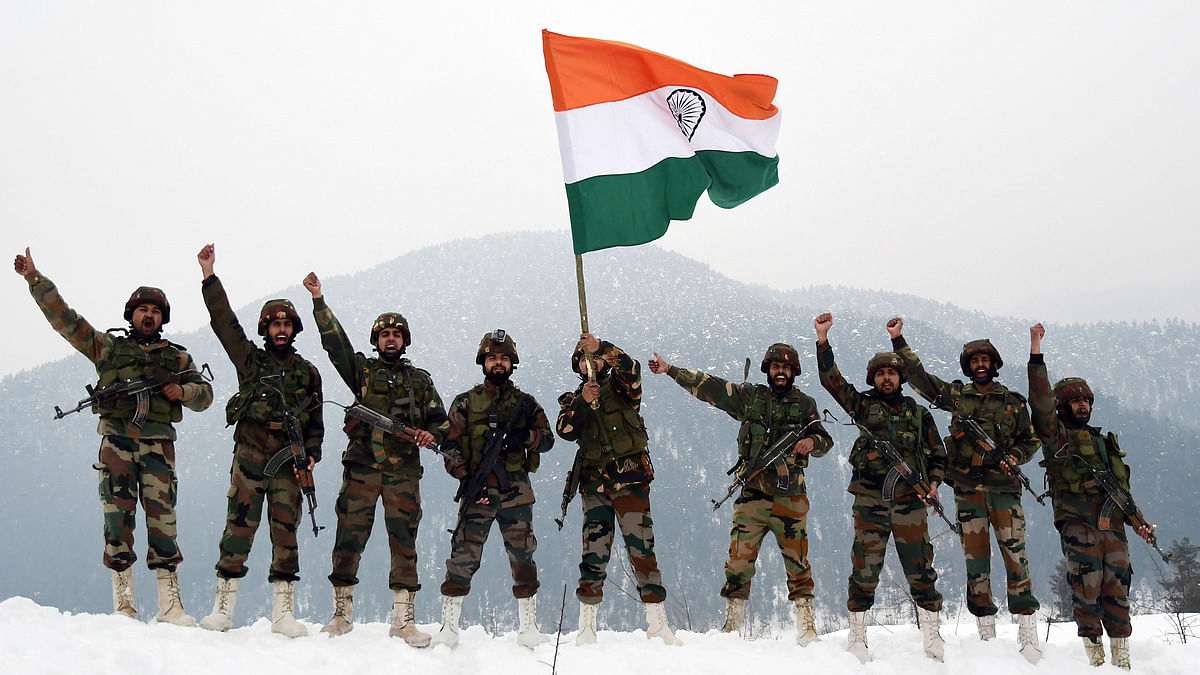You are using an out of date browser. It may not display this or other websites correctly.
You should upgrade or use an alternative browser.
You should upgrade or use an alternative browser.
A decision to cancel orders worth billions of dollars for ammunition that were to be placed on the private sector and a new process in which limited numbers are being looked at have hit the industry hard, dampening hopes of creating a domestic ecosystem to replace imports.
In a big blow to at least 11 Indian companies that were bidding to supply ammunition ranging from rifle-fired grenades, rockets, artillery shells and fuses to the army, the defence ministry has withdrawn seven tenders in June, saying bids are non-compliant without sharing specific reasons.
This has been a major cause for concern given that banking guarantees alone worth over Rs 300 crore had been pledged by the companies since the bidding process started in 2017 and several Indian entities had signed up technology transfer agreements and had even made payments to foreign collaborators.
Industry insiders have told ET that a major disappointment has been that it took over three years to decide not to go ahead with the procurement plan, without even going for field trials where they could have demonstrated their ability to deliver a range of ammunition.
The decision to issue tenders to the private sector for a 10-year supply programme was taken after surgical strikes across Line of Control in 2016, following which India spent thousands of crores on emergency purchases as tensions arose with Pakistan.
Among major companies that took part in the competition were Kalyani Group, Mahindra Defence, Premier Explosives NSE -2.31 % and Solar Group. The companies had tied up with foreign partners, several of which had been earlier suppliers of ammunition being imported by India.
“It is difficult to understand why it took three years to decide that the process needs to be cancelled. For three years the companies remained tied down with banking guarantees worth crores and spent money on tie-ups and creating capacity,” an industry insider said.

Attempt to scale down ammunition orders dampener for private companies
In a big blow to at least 11 Indian companies that were bidding to supply ammunition ranging from rifle-fired grenades, rockets, artillery shells and fuses to the army, the defence ministry has withdrawn seven tenders in June, saying bids are non-compliant without sharing specific reasons.

Text Size: A- A+
Ground forces dominate Indian military strategy. Since its independence, India has fought five wars along its unsettled northern land borders, and its most vexing security threats today—as illustrated by the ongoing Chinese incursions in the northern region of Ladakh—still loom across those same borders. The Indian Army commands a clear and growing majority of military budget allocations and an even larger share of military personnel. But how does India use its ground forces, and how well do they serve Indian security interests?
The Indian Army—and by extension, Indian defence policy—is dominated by an orthodox offensive doctrine. This is an approach to the use of force that centres on large army formations, operating relatively autonomously from political direction. The doctrine’s theory of victory relies on the logic of deterrence by punishment––that India’s threat of a prohibitively costly retaliation will convince its enemy to refrain from aggression. The punitive cost often takes the form of capturing enemy territory as a bargaining chip, even though India usually pursues strategically defensive war aims to maintain the territorial status quo.
This orthodox offensive doctrine was practiced through several successive conflicts, institutionalised through organisational reforms and professional military education, and codified in official publications, including the latest Land Warfare Doctrine, released in 2018. Since the army is by far the largest and best-resourced service, at the forefront of every war and current-day plans, this doctrine has taken on even larger proportions as the de facto national military strategy of India.
The stubborn dominance of the orthodox offensive doctrine, even in the face of drastic changes in India’s strategic environment, renders the military a less useful tool of national policy. In the two decades since India fought its last war in and around the district of Kargil in 1999, three major strategic trends have fundamentally changed India’s security environment: nuclear deterrence has made major conventional war unlikely; China’s military power and assertiveness now pose an unprecedented threat; and radical new technologies have redefined the military state of the art.
India’s security policy has not kept pace. Given the balance of military power on India’s northern borders, India cannot decisively defeat either Pakistan or China on the battlefield. Without the ability to impose such unacceptable costs, India’s doctrine will not deter its rivals, which both have significant resolve to bear the costs of conflict. The continued pursuit of large, offensive military options also raises the risk that its enemies will rely on escalatory—even nuclear—responses. And because the doctrine demands a force structure of large ground-holding formations, it pulls scarce resources away from modernisation and regional force projection—a problem made especially acute as the Indian government makes tough economic choices amid the coronavirus pandemic.
Also read: India’s electronic warfare units are archaic, but camouflage, concealment can blunt PLA
A more challenging strategic environment
Since India fought its last conventional war in 1999, its strategic environment has changed considerably. As India’s inchoate responses to crises since then reveal, its military doctrine and force structure still have not adapted. The scholarship on military innovation presents a broad consensus that military strategies are most likely to change in response to changes in the state’s external environment.
In India’s case, three major strategic changes of the 21st century provide sufficient external motivation for change. First, the open declaration by India and Pakistan that they had nuclear weapons, which introduced a new, confounding element into India’s security policy. Second, the extraordinarily rapid modernisation of the People’s Liberation Army (PLA), which poses a new, more comprehensive threat from China. Third, the step change in the complexity and effectiveness of military technology.
Also read: Not just tanks in Ladakh: India needs integrated combat elements for deterrence at 16,000 ft
A failure to adapt
Despite the abundance of incentives, India’s military strategy has not adapted quickly to the evolving strategic environment. While the motivations for change are apparent, the mechanisms for change are problematic.
Adapting to external changes requires accurate strategic assessments and a rational deliberation of policy options. Such tasks are best performed in a periodic strategic planning process. The US government is mandated to produce a written National Security Strategy. All major powers—including China, France, Japan, Russia, and the UK—produce defence policy white papers. India is alone among major powers in not regularly producing such a deliberate planning document.
The services’ organisational cultures are another powerful impediment to doctrinal change. Left to its own devices, the Indian Army has persisted with deep-rooted practices favouring the orthodox offensive doctrine. Meanwhile, the generally non-expert civilian bureaucracy is unable to drive change or arbitrate between intra-military disputes. Even occasional episodes of reassessment have reinforced the army’s existing patterns in strategy and doctrine rather than challenging them.
Given that the military is unlikely to overhaul its strategic approach independently, the final major impediment to doctrinal change has been the traditional absence of authoritative civilian direction to change. The government of Prime Minister Narendra Modi, empowered by two decisive electoral mandates, has provided the political muscle to enact some of the long-overdue reforms. The transformative change was the establishment of the Chief of Defence Staff (CDS) position — although there is no evidence yet that this reform will also change the doctrine.
Also read: Close combat is so last century. China will use drones, PGMs, high-end tech against India
A less useful force
Given the absence of major reforms, the Indian military will become decreasingly useful as an instrument of national power. The army remains, by far, the largest and best-resourced of the Indian military services, accounting for 57 per cent of the defence budget (compared to 23 per cent for the air force and 14 per cent for the navy) and for 85 per cent of military personnel (compared to 9 per cent for the air force and 4 per cent for the navy).
Within the army, the bias favouring conventional offensive operations is perpetuated through an officer promotion system that uses quotas to greatly favour officers from the combat arms, especially infantry and artillery. The army’s general staff reflects this combat-arms privilege and perpetuates it through its control of doctrine and organisation of the force.
However, it lacks the key enablers to deter or defeat a modern, information-era adversary—especially the C4ISR (command, control, communications, computers, intelligence, surveillance, and reconnaissance) capabilities that knit together sensors and shooters and the long-range precision weapons that can target the enemy’s vital rear areas and lines of communication.
It lacks the organisation for joint deterrence and war-fighting, in which the military services are integrated with each other from the highest levels of command down to tactical units, both to defend the Indian homeland and to project expeditionary power into the region.
Perhaps most fundamentally, it lacks a theory of victory that would use Indian forces to coerce, deter coercion, and, if necessary, fight, all in ways that are responsive to national political direction.
Also read: Three pitfalls of CDS, Dept of Military Affairs and why it should make us sceptical
Recommendations for the Indian Army
The recommendations are designed to require relatively modest additional resources and generate minimal resistance among other services or the civilian bureaucracy.
- Consider new theories of victory. To deter and defeat coercion, the Indian Army should consider rebalancing its doctrine with greater use of denial strategies. It should more frequently seek to make coercion and territorial revisionism prohibitively costly or unfeasible for the enemy rather than relying on ex post facto punishment.
- Consider how to be the supporting element of a joint force. Indian forces will increasingly be compelled to deter and fight in multiple domains and different theatres, and the army should therefore consider how to play a productive role in new missions where it supports a main effort elsewhere.
- Consider new niche capabilities. The army can make sizable and qualitatively different contributions to joint combat by developing more robust intelligence, surveillance, and reconnaissance capabilities and by increasing its capacity for long-range precision strike.
Conclusion
India and its army cannot ignore the prospect of a major war, or indeed of a simultaneous collusive threat on both fronts. It must therefore retain the capacity for major conventional operations. Given the length of India’s borders and the size of Pakistan’s and China’s armies, this would require maintaining a sizeable conventional force. However, India should prepare not only for the most dangerous scenario but also for more likely enemy courses of action.
As the Indian Army’s own Land Warfare Doctrine recognises, grey zone and hybrid threats are a central feature of the contemporary and future strategic environments. Meeting those threats does not require a major resource investment; rather, most fundamentally, it requires rethinking India’s traditional orthodox offensive doctrine.
Indian planners and strategists have begun the necessary discussions. However, reform efforts continue to be thwarted by the lack of formal planning processes, the organisational interests of the military, and haphazard civilian-directed change. Top-down change will remain patchy as long as political leaders focus on short-term tokens of bravado at the expense of long-term investments in modernisation.
Modernisation is more than only new equipment and organisation; it also involves new theories of victory, and doctrinal change that allows responses along the full spectrum of conflict. Punitive incursions into enemy territory, using mass and firepower, are rarely effective in wartime, and even less useful as coercive options in peacetime or crisis. If the Indian Army remains focused on conventional offensive operations, it will become increasingly irrelevant as a tool of national security policy.
Arzan Tarapore is a research scholar on South Asia at the Walter H. Shorenstein Asia-Pacific Research Center at Stanford University.Views are personal.
This is an edited excerpt from the author’s paper The Army in Indian Military Strategy: Rethink Doctrine or Risk Irrelevance first published by Carnegie India. Read the full paper here.
Subscribe to our channels on YouTube & Telegram

Indian Army's orthodox doctrine distorts military strategy in Ladakh-type conflicts: Study
Stanford researcher writes why New Delhi in recent times has been left with an invidious all-or-nothing choice in the use of military force—either start a major war or abstain from action.
 theprint.in
theprint.in
India has reportedly cancelled two armament import contracts for the army and elected to source materiel locally.
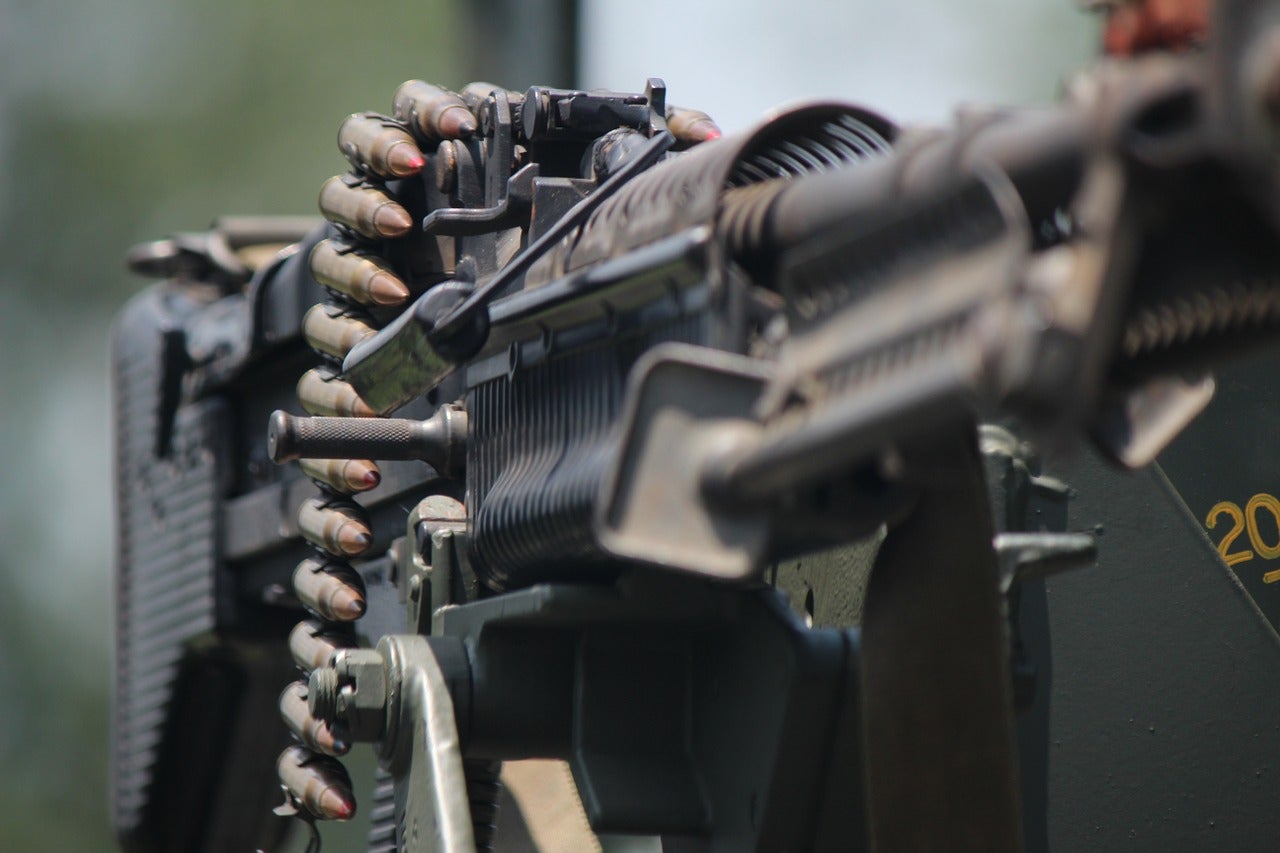
The two arms import contracts carried a combined value of more than $2.5bn. Credit: Zack Culver from Pixabay.
Share Article
India has reportedly cancelled two armament import contracts for the army and elected to source materiel locally.
According to a report by The Economic Times, the Ministry of Defence scrapped two contracts in the final stages following a special meeting.
The two contracts carried a combined value of more than $2.5bn and involved procuring close quarter carbines and self-propelled air defence systems from the UAE and South Korea respectively.
Sources told the publication that the two contracts will now be placed under the ‘Make in India’ initiative to support the domestic defence manufacturing sector.
However, the report did not specify under which clause the procurement of arms will advance.
Before it was cancelled, the deal for close-quarter carbines was being fast-tracked after the army cited an urgent requirement.
The Indian Army also seeks to acquire five regiments of Self Propelled Air Defence Gun Missile System (SPAD-GMS) that can be rapidly deployed and relocated based on requirements.
The Economic Times report further added that the Indian Government decided to cancel the two contracts amid representations from domestic companies offering an equivalent product for sale, as well as to accelerate the Atmanirbhar Bharat initiative, which seeks to make the country self-reliant.
India has recently ramped up defence acquisitions following the ongoing military standoff with China.
Recently, the government signed contracts worth Rs25.8bn ($353.63m) to procure Pinaka missiles for the army.
It is also planning to upgrade its ageing infantry combat vehicle (ICV) fleet.
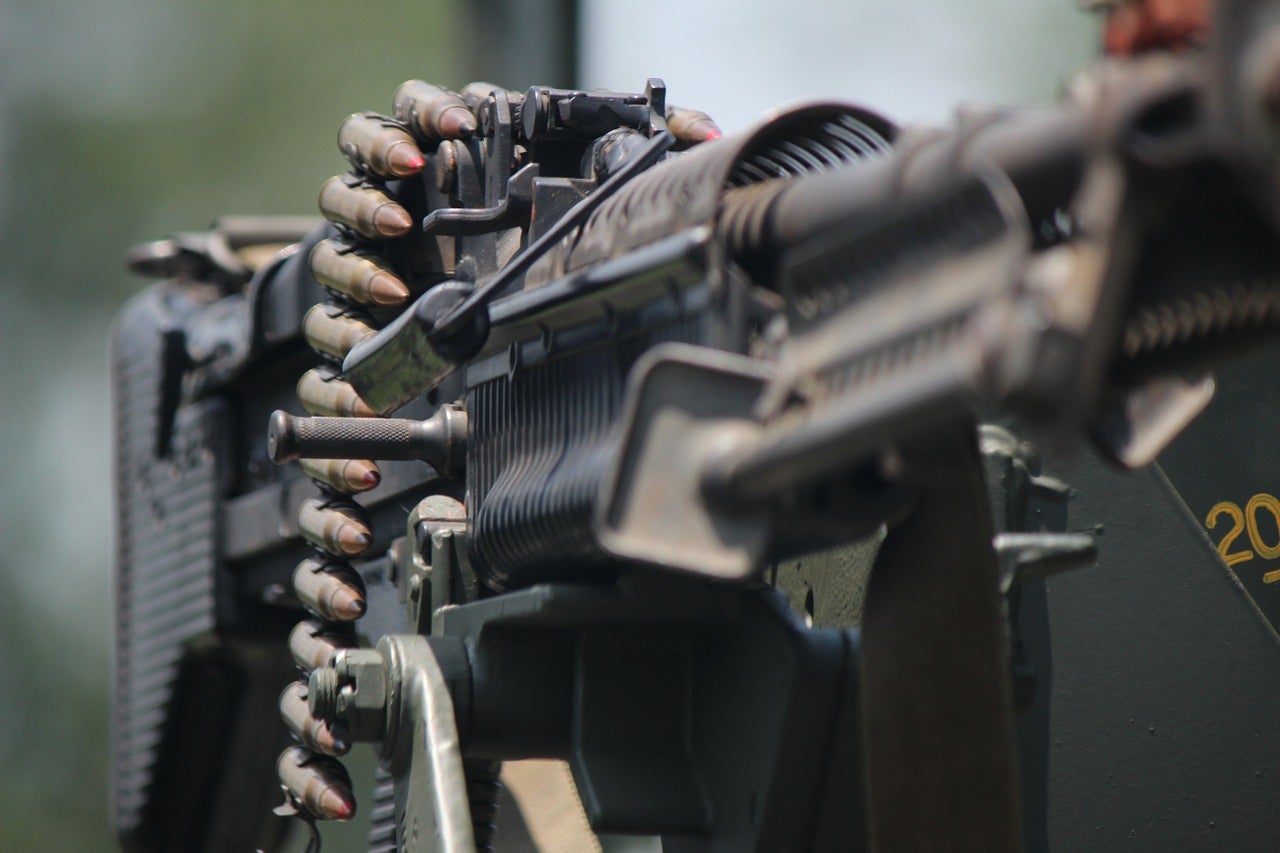
 www.army-technology.com
www.army-technology.com

 www.army-technology.com
www.army-technology.com

The two arms import contracts carried a combined value of more than $2.5bn. Credit: Zack Culver from Pixabay.
Share Article
India has reportedly cancelled two armament import contracts for the army and elected to source materiel locally.
According to a report by The Economic Times, the Ministry of Defence scrapped two contracts in the final stages following a special meeting.
The two contracts carried a combined value of more than $2.5bn and involved procuring close quarter carbines and self-propelled air defence systems from the UAE and South Korea respectively.
Sources told the publication that the two contracts will now be placed under the ‘Make in India’ initiative to support the domestic defence manufacturing sector.
However, the report did not specify under which clause the procurement of arms will advance.
Before it was cancelled, the deal for close-quarter carbines was being fast-tracked after the army cited an urgent requirement.
The Indian Army also seeks to acquire five regiments of Self Propelled Air Defence Gun Missile System (SPAD-GMS) that can be rapidly deployed and relocated based on requirements.
The Economic Times report further added that the Indian Government decided to cancel the two contracts amid representations from domestic companies offering an equivalent product for sale, as well as to accelerate the Atmanirbhar Bharat initiative, which seeks to make the country self-reliant.
India has recently ramped up defence acquisitions following the ongoing military standoff with China.
Recently, the government signed contracts worth Rs25.8bn ($353.63m) to procure Pinaka missiles for the army.
It is also planning to upgrade its ageing infantry combat vehicle (ICV) fleet.

India cancels two armament import contracts
India has reportedly cancelled two armament import contracts for the army and elected to source the materiel locally, reported The Economic Times.

India cancels two armament import contracts
India has reportedly cancelled two armament import contracts for the army and elected to source the materiel locally, reported The Economic Times.
According to a statement published by the Indian MoD (Ministry of Defense) on December 30, 2020, the Indian Army has inducted three sets of 10-meter short span bridges, which were formally handed over on 29 December 2020 at the Talegaon facility of Larsen & Toubro Limited.

Short Span Bridging System 10 m 8x8 truck-mounted bridge launcher. (Picture source India MoD)
L&T (Larsen & Toubro Limited)has manufactured various kinds of military mobile bridging systems for the Indian Army in partnership with DRDO. These bridges have wet and dry gap crossing capability for today's highly mobile combat forces and have been designed to carry heavy combat vehicles up to 70-ton (tracked) Military Load Class (MLC).
The Short Span Bridging System is a mechanically launched bridging system of MLC-70 load class to bridge small gaps and canals. The mobile bridge system is mounted on a modified BEML- Tatra T815 8x8 military truck chassis.
A 10 m folded scissor bridge is carried at the rear of a vehicle. The bridge is launched rearwards using a pivoting metal frame and a series of steel wire and winches connected to the engine.
In addition to bridging the smaller gaps, this bridging system will be compatible with SARVATRA bridging system so that various gaps of 5 m to 75 m in steps of 10 m can be bridged.

 www.armyrecognition.com
www.armyrecognition.com

Short Span Bridging System 10 m 8x8 truck-mounted bridge launcher. (Picture source India MoD)
L&T (Larsen & Toubro Limited)has manufactured various kinds of military mobile bridging systems for the Indian Army in partnership with DRDO. These bridges have wet and dry gap crossing capability for today's highly mobile combat forces and have been designed to carry heavy combat vehicles up to 70-ton (tracked) Military Load Class (MLC).
The Short Span Bridging System is a mechanically launched bridging system of MLC-70 load class to bridge small gaps and canals. The mobile bridge system is mounted on a modified BEML- Tatra T815 8x8 military truck chassis.
A 10 m folded scissor bridge is carried at the rear of a vehicle. The bridge is launched rearwards using a pivoting metal frame and a series of steel wire and winches connected to the engine.
In addition to bridging the smaller gaps, this bridging system will be compatible with SARVATRA bridging system so that various gaps of 5 m to 75 m in steps of 10 m can be bridged.

Indian army takes delivery of three sets of 8x8 truck-mounted bridge l
According to a statement published by the Indian MoD (Ministry of Defense) on December 30, 2020, the Indian Army has inducted three sets of 10-meter short
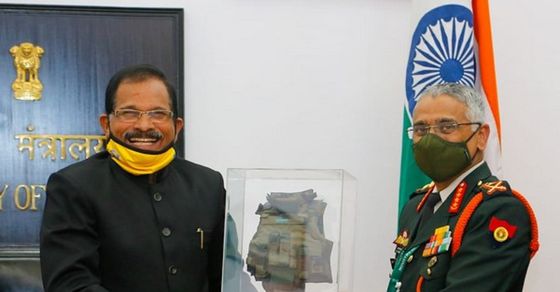
100,000th Bullet Proof Jacket handed over to Indian Army
Minister of State for Defence Shripad Naik handed over the 100,000th Bullet Proof Jacket (BPJ) to Army Chief General M M Naravane at a ceremony.
New Delhi: The government will ensure that "the best of weapons and protective armour" are provided to the soldiers, Minister of State for Defence Shripad Naik said Wednesday.
Naik handed over the 100,000th Bullet Proof Jacket (BPJ) to Army Chief General M M Naravane at a ceremony here, the Defence Ministry said in a statement.
As per the statement, Naik said at the event that the Modi government has placed high emphasis on the operational safety of soldiers and it has honoured its commitment of protecting their "precious lives" while fighting the enemy.
Naik assured that "the government will ensure that our soldiers will be provided with the best of weapons and protective armour and such requirements will always remain uppermost in priority".
He appreciated manufacturer company SMPP Pvt Ltd for supplying the first one lakh BPJs four months ahead of the delivery schedule.
The minister noted this BPJ is an indigenous product manufactured under the 'Make in India' initiative and the company is even exporting the product all over the world making India a global hub for supply of such defence items.
The minister said this BPJ has been appreciated by Indian soldiers who are using them on the borders and in countering insurgency.

Indian Army signs contract with Goa Shipyard Limited for 12 Fast Patrol Boats
The signing of the contract comes eight months after India first detected intrusions by Chinese soldiers into Indian territory
NEW DELHI: The Indian army has signed a contract with Goa Shipyard Limited for 12 Fast Patrol Boats for surveillance and patrolling of large water bodies.
A Twitter post from the Indian army said the boats would be used for patrols in high altitude regions as well – an indication that the order was being placed for patrolling the Pangong Tso lake in Ladakh – one of the sites of the ongoing military standoff between India and China.
“Delivery would commence from May 2021," the post on Friday said.
The signing of the contract comes eight months after India first detected intrusions by Chinese soldiers into Indian territory including along the banks of the Pangong Tso lake. India had detected intrusions on the north bank of the lake in early May with troops involved in hand-to-hand fights. Nearly two-thirds of the lake is controlled by China, with the rest under Indian control. Troops of both countries have not vacated positions they took in the summer months of 2020 including on heights of mountains in Ladakh where temperatures could reach minus 50 according to some accounts. New Delhi had placed emergency orders for high altitude clothing, tents and other equipment for its troops.
The order for the patrol boats also indicates that India is gearing up for the coming summer months when China could make another bid to alter the status quo or the perception of just where the Line of Actual Control lies.
=======================================
Sikhs do NOT form a massive bloc; only the Punjab Regiment, the Sikh Regiment and the Sikh Light Infantry are exclusively Sikh; these are far outnumbered by non-Sikh formations, although Sikhs are to be found in every arm, in every specialisation, including the Navy and the Air Force. Perhaps they seem to be present in disproportionate numbers by being so distinctive and recognisable.
Sometimes people also get misled by the higher proportion of Sikhs in the officer cadres. This should not lead to an erroneous extension to the OR. The percentage of officers within the Army is itself miniscule.
Came across this heartening moment of our army:
The CO of the Unit is a Bengali Officer who is sporting a Pagri and beard and carrying the Gurugranth Sahib on his head.
LOL.Came across this heartening moment of our army:
The CO of the Unit is a Bengali Officer who is sporting a Pagri and beard and carrying the Gurugranth Sahib on his head.
When I was a member of a tent-pegging team, the other two were Sardars, so I got to wear a turban for the runs. I still wasn't shaving properly though, so that's where it stopped, with the turban.
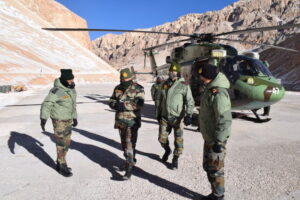
India to Allocate Three More Divisions to China Border
Irrespective of how the current standoff in eastern Ladakh is resolved, the Indian Army is in the process of reorganising its deployment along the Himalayan frontier to be better prepared to take on a
 bharatshakti.in
bharatshakti.in
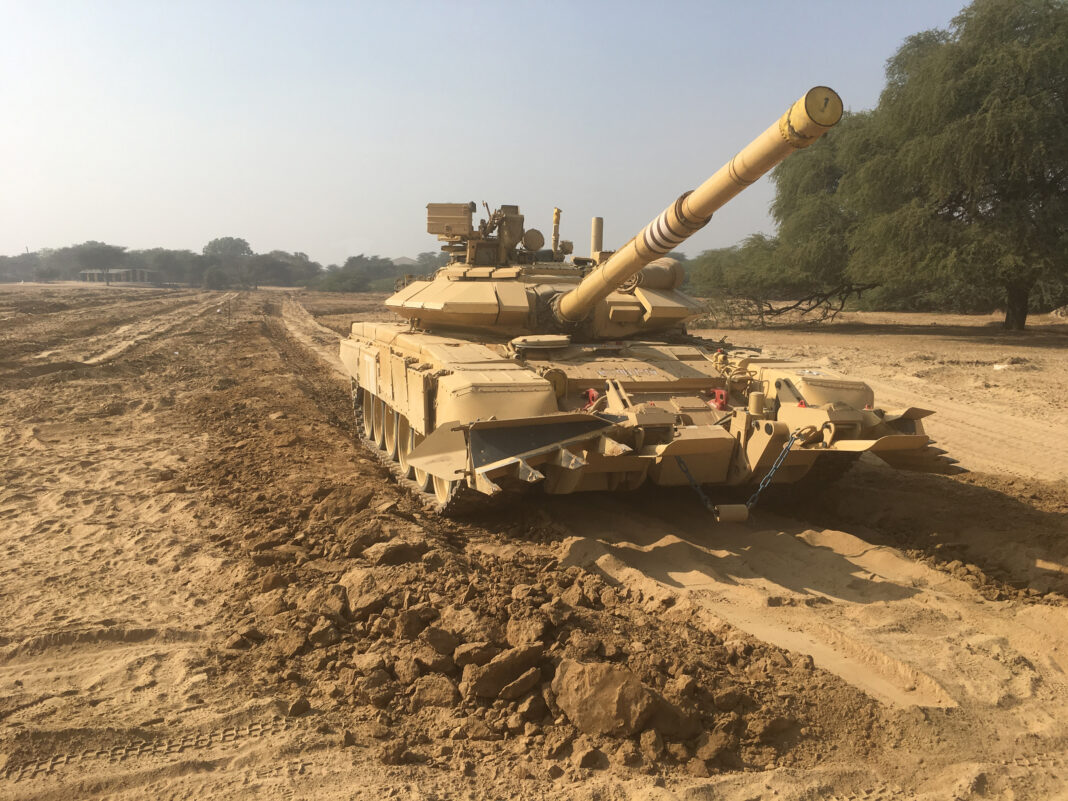
Pearson Engineering is under contract to supply over 1500 Track Width Mine Ploughs (TWMP) to the Indian Ministry of Defence. The order, which will see the Pearson plough integrated with the T-90 S/SK tank, will be delivered in partnership with BEML Limited.
With previous experience in integrating counter-mine capabilities with the T-72, T-90, ARJUN Mk1 Main Battle Tank (MBT) and BMP-2 Armoured Vehicles, Pearson Engineering is proud to be a current supplier to the Indian Army.
Dr. Deepak Kumar Hota, Chairman and Managing Director of BEML said, “We are proud to be associated with [the] MoD to enhance the combat capabilities of the Indian Army. This is another example of BEML’s capability to meet the specific requirements of our armed forces. BEML signifies the true spirit of Make in India”.
Mr. Richard Beatson, Business Development Director at Pearson Engineering said, “We are delighted to have received this important order alongside our partners at BEML. Having been committed to developing capability for India for many years, we look forward to further developing our relationships, both with the end-user and Indian industry.”
The track width mine plough will enable the Indian Army’s T-90 MBTs to move through mined areas whilst remaining highly mobile. Pearson Engineering has a long heritage in the supply and integration of mine ploughs to Armed Forces around the world.
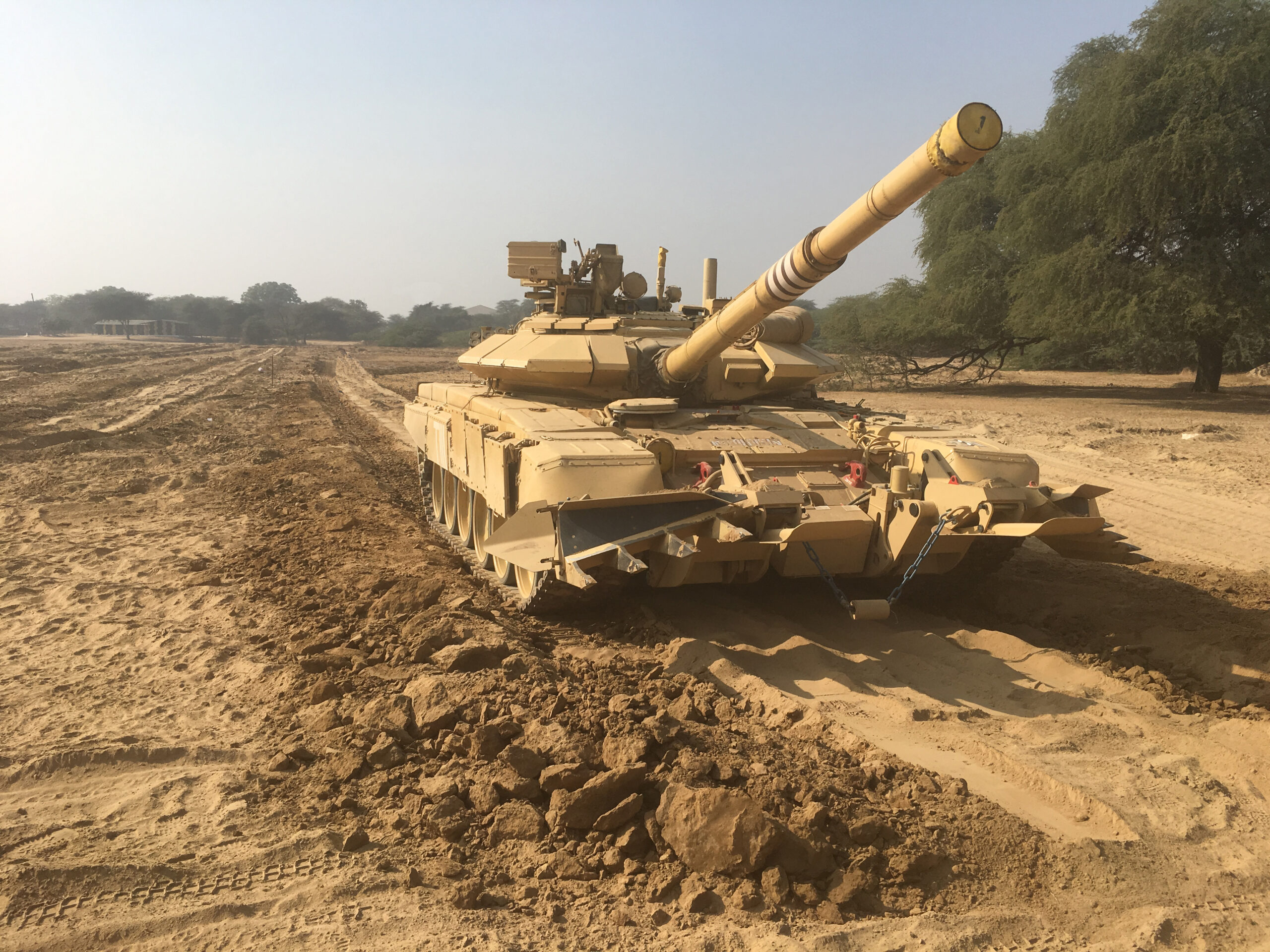
Pearson Engineering to Supply Mine Ploughs to the Indian Army - European Security & Defence
Pearson Engineering is to supply Mine Ploughs to the Indian Army in partnership with BEML in order to equip the service's tanks.
 euro-sd.com
euro-sd.com
Indian Army gets 6,000 new Israeli Light Machine Guns

India had signed a contract with Israel Weapons Industries (IWI) on March 19, 2020 to procure 16,479 LMGs under Fast Track Procedure.
With the disputed border with China and Pakistan active at the same point of time, the guns will add more firepower to the deployed frontline troops. The Negev 7.62X51 mm Light Machine Gun is a combat proven weapon and currently used by several countries around the globe.
This LMG will greatly enhance the lethality and range of a soldier vis-a-vis the presently used weapon.
Indian Army received first lot of consignment of 6,000 quantities in mid January this year in Mumbai. The guns have been shifted to Jabalpur and is undergoing proper inspection. The rest of the guns is expected to arrive by March end of this year.
Under government's 'Make in India' initiative, rest of the requirement of the Indian Army is being met by Indian industry and currently is at pre-trial stage. "Field Evaluation Trial (FET) scheduled this month," sources said.
On March 19, 2020, Indian Armed Forces' long-standing requirement of a modern state-of-the-art Light Machine Gun (LMG) was fructified with approval of Indian Defence Minister Rajnath Singh.
The Acquisition Wing of Ministry of Defence then had signed the capital acquisition contract with Israel Weapons Industries for procurement of 16,479 LMGs at a cost of Rs 880 crore.
The Defence Minister had said provisioning of this operationally urgent and very critically needed weapon will boost the confidence of the frontline troops and provide much needed combat power to the Armed Forces.
https://www.indiatoday.in/india/sto...israeli-light-machine-guns-1763771-2021-01-29
India had signed a contract with Israel Weapons Industries (IWI) on March 19, 2020 to procure 16,479 LMGs under Fast Track Procedure.
With the disputed border with China and Pakistan active at the same point of time, the guns will add more firepower to the deployed frontline troops. The Negev 7.62X51 mm Light Machine Gun is a combat proven weapon and currently used by several countries around the globe.
This LMG will greatly enhance the lethality and range of a soldier vis-a-vis the presently used weapon.
Indian Army received first lot of consignment of 6,000 quantities in mid January this year in Mumbai. The guns have been shifted to Jabalpur and is undergoing proper inspection. The rest of the guns is expected to arrive by March end of this year.
Under government's 'Make in India' initiative, rest of the requirement of the Indian Army is being met by Indian industry and currently is at pre-trial stage. "Field Evaluation Trial (FET) scheduled this month," sources said.
On March 19, 2020, Indian Armed Forces' long-standing requirement of a modern state-of-the-art Light Machine Gun (LMG) was fructified with approval of Indian Defence Minister Rajnath Singh.
The Acquisition Wing of Ministry of Defence then had signed the capital acquisition contract with Israel Weapons Industries for procurement of 16,479 LMGs at a cost of Rs 880 crore.
The Defence Minister had said provisioning of this operationally urgent and very critically needed weapon will boost the confidence of the frontline troops and provide much needed combat power to the Armed Forces.
https://www.indiatoday.in/india/sto...israeli-light-machine-guns-1763771-2021-01-29
HAL's light utility chopper for army gets initial nod

The Light Utility Helicopter (LUH), made by the state-run Hindustan Aeronautics Ltd. (HAL) for the Indian Army, received the initial operational clearance (IOC) from the military aviation regulator Camila on Friday.
"The army variant of the LUH received the IOC from Camila in the presence of Defence Minister Rajnath Singh on the margins of the 13th biennial Aero India 2021 expo at the Yelahanka air base in the city.
The 3-tonne class single-engine chopper, designed and developed by the rotary wing of the city-based defence behemoth, will replace the ageing Cheetah and Chetak copters' fleet in operation of the three defence services.
"We are in the phase of integrating and flight-testing mission role equipment on LUH, whose performance in all terrains and under all-weather conditions has been satisfactory," said HAL director Arup Chatterjee on the occasion.
Powered by the turbo shaft engine (Ardiden 1U) of the French aerospace major Safran, the LUH is equipped with a smart cockpit display system and health and usage monitoring system for high-altitude missions in the Himalayas.
The certification process involving ground testing, system testing, flight testing, including hot and cold weather trials have been completed.
"Based on flight trials, the basic helicopter certification has been complied with satisfactorily," added the statement.
https://www.business-standard.com/article/current-affairs/hindustan-aeronautics-light-utility-chopper-for-army-gets-initial-nod-121020501079_1.html#:~:text=Hindustan%20Aeronautics'%20light%20utility%20chopper%20for%20army%20gets%20initial%20nod,-IANS%20%7C%20Bengaluru%20%7C%20Last&text=The%20Light%20Utility%20Helicopter%20(LUH,aviation%20regulator%20Camila%20on%20Friday.


